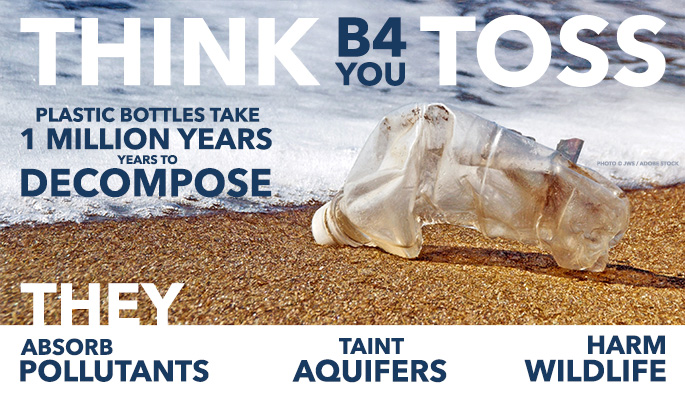
Plastic bottles are ubiquitous items; in our homes, cars, workplaces, and (regrettably), in our garbage cans. Most of these are available for return for a 5 or 10 cent deposit, a measure that has done its part in reducing the amount of non-biodegradable litter on the ground, and producing recycled byproducts that we actually use. The material used to make soda and water bottles is “reborn” to make numerous, new plastic products, while lowering production costs and saving the environment. The most notable use for discarded plastic bottles, however, is housing.
Plastic bottles take an estimated degradation time of 1 million years. Our great, great-grandchildren will never see the plastic water bottle you threw out this morning fully degrade, which says a lot about the state of the Earth we are creating for our future generations. Because plastic breaks down through a process called photo-degradation, the small pieces that break off over time absorb natural pollutants and taint aquifers and wildlife (if eaten by an animal). Over a long period of time, one plastic bottle can contaminate an entire ecosystem, simply through the process of degradation.
But, with plastic bottles filled with dirt and coated with mud and mortar, we can create sustainable and livable conditions in poverty-stricken areas. These structures are disaster and (incidentally) bullet-resistant, lending credibility to the material’s long lifespan. When stuffed with different materials, these bottle houses are well-insulated against the harsh elements. For pennies, we can make a solid effort to save our planet and create free, sustainable dwellings for all.




































































































































 Three Ways to Engage Teams and Clients to Maximize Your Recycling Program Engagement
Three Ways to Engage Teams and Clients to Maximize Your Recycling Program Engagement  How to Integrate Accessibility Into Your Sustainability Planning
How to Integrate Accessibility Into Your Sustainability Planning  Why Park Benches Can Promote Workplace Well-Being
Why Park Benches Can Promote Workplace Well-Being 
